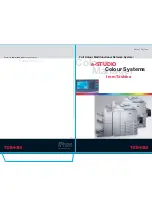
Crestron
e-control Vote SW-VOTE
68
••
Appendices
Installation & Reference Guide — DOC. 5822
Appendix A: Theory of Operation
This section describes the operation of the e-mailer signal block as it processes
signals from the control system. Signal names are shown as conjoined words with
initial caps set in
bold
type, such as
SendNow.
Refer to the “Signal Reference”
beginning on page 78 for in-depth information on these signals.
Server Protocol
Run the Crestron Software Server application,
swserver.exe
, to license
(
Server | License…
) and configure (
Server | Configure…
) server operation.
Although the server
application
is now running, the server
protocol
must be
manually started (
Server | Start
) t o establish the communications link. Once
started, licensing and configuration options are off limits. To change a configuration
option, the server protocol must be halted (
Server | Stop
).
Signal Block Definition / Activation
Definition / activation of signal
blocks is performed in the
Signal
Blocks
tab of the
Configuration
Options
window — which can
only be accessed while the server
protocol is halted.
Signal Blocks (in general) are “defined” (created) in the “Configure options”
window,
Signal Blocks
tab. Once defined, they are saved in the Configuration
Settings file.
Signal Blocks are not “active” (listening for signals) unless activated in the list under
the
Signal Blocks
tab by checking the box next to the signal block name. The number
of active signal blocks of each type cannot exceed the respective limits of your
license. Should this happen, a warning appears on the
Signal Blocks
tab and the
server protocol does not start.
There is no theoretical limit to the total number of signal blocks which may be
defined in a given configuration. (A practical limit has yet to be determined.)
Signal Block Enable / Disable
Whereas most digital signals are
pulsed, the
Enable
signal is
unusual in that it is state-sensitive.
Once the signal block has been defined and activated, and the server protocol is
running, the signal block still has very limited functionality until it is enabled with
an assertion of the
Enable
signal by the control system. Most other signals require
the signal block to be enabled first; otherwise they produce an “Object not loaded”
error. Once enabled, system resources are loaded and the signal block to respond to
signals from the control system to send or receive e-mail.
De-asserting the
Enable
signal causes the signal block to unload those system
resources, making it dormant once again.
The following signals are exceptions to this rule. They can be processed without first
enabling the signal block:
•
Enable
(assert) of course
•
All the e-mailbox’s
Set____
signals
•
The e-mailer’s
Shortcut
signals. When received by a disabled e-mailer, the e-mailer is
“auto-enabled” — but only for the duration of the signal.
Signal Block Error Reporting
All signal blocks have a
Local error signals
option to define a set of signals for the
purpose of reporting of errors “locally.” Otherwise, errors are reported “globally” to
















































